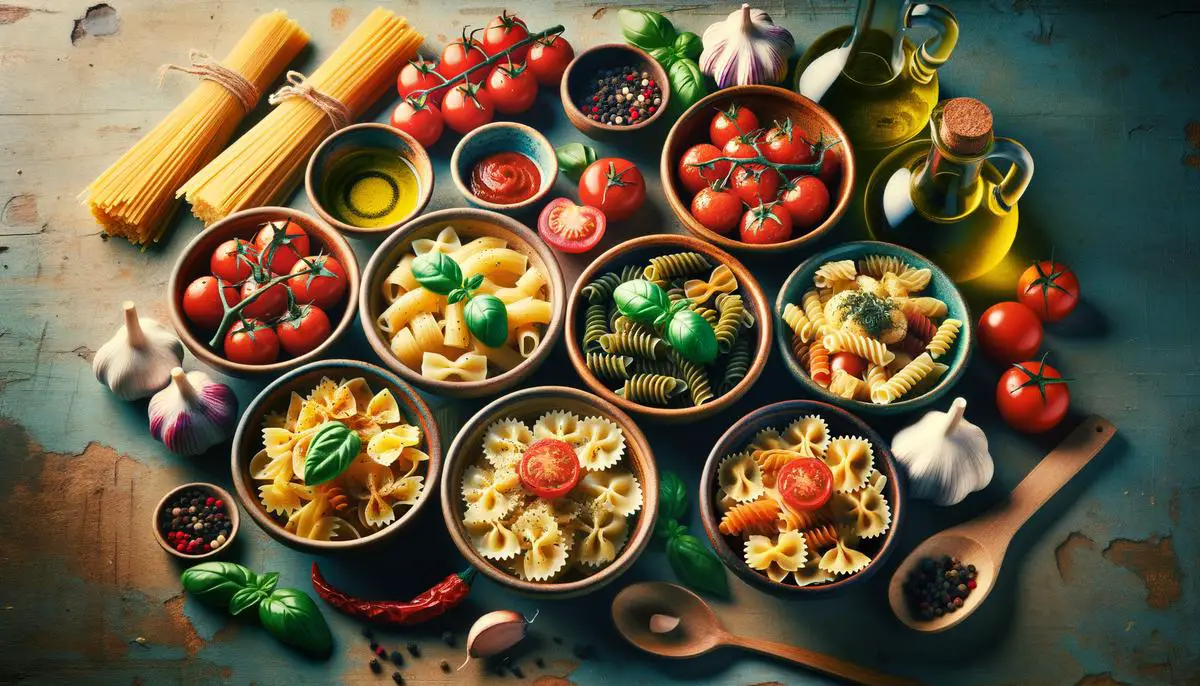What is pasta?
Pasta is a quintessential ingredient in Italian cuisine, revered for its versatility and deeply rooted in tradition. At its core, pasta is made from durum wheat flour mixed with water, an amalgamation that is then shaped into various forms and dried. This fundamental process gives rise to an array of shapes and sizes, from spaghetti to fusilli, each design intended to serve specific culinary purposes.
Durum wheat, chosen for its high protein content and firm texture, ensures that pasta maintains its shape and texture during cooking. Once the dough is formed, it can be cut, extruded, or otherwise shaped into numerous styles, which are then typically dried to enhance preservation and elasticity when later cooked.
The pasta-making process embodies a blend of science and art. From selecting the right wheat varietal to mastering the dough's consistency, each step is crucial in achieving the perfect pasta. This balance guarantees that, once cooked, pasta provides an ideal canvas for a plethora of sauces and ingredients, making it a beloved staple not only in Italy but around the world.
How is pasta made?
The process of making pasta involves fundamental steps that have been cherished through generations, reflecting both tradition and culinary art. Initially, the journey begins with mixing durum wheat flour and water, a simplistic yet paramount combination that forms the base of the dough. Precision in the mixture ensures a smooth, pliable consistency, paving the way for kneading. Kneading develops the gluten in the dough, conferring it with elasticity and strength. This process demands patience and care, attributes that echo the essence of creating pasta at home.
After the dough attains the desired consistency, it transitions to shaping. This stage is where creativity makes its mark, allowing for the crafting of various pasta forms, from long, slender strands to intricate shapes that are best suited for holding sauces. The shaped pasta is then left to dry, a step that enhances its preservation. While air-drying is traditional, commercial production diverges, utilizing large-scale dryers to expedite the process.
The distinction between commercial and homemade pasta lies not only in techniques and scale but also in the experience it offers. Homemade pasta, devoid of preservatives found in commercial variants, champions the simplicity and nutrition of this culinary staple. Its creation fosters a connection to Italian culinary traditions, inviting a sense of accomplishment and joy.
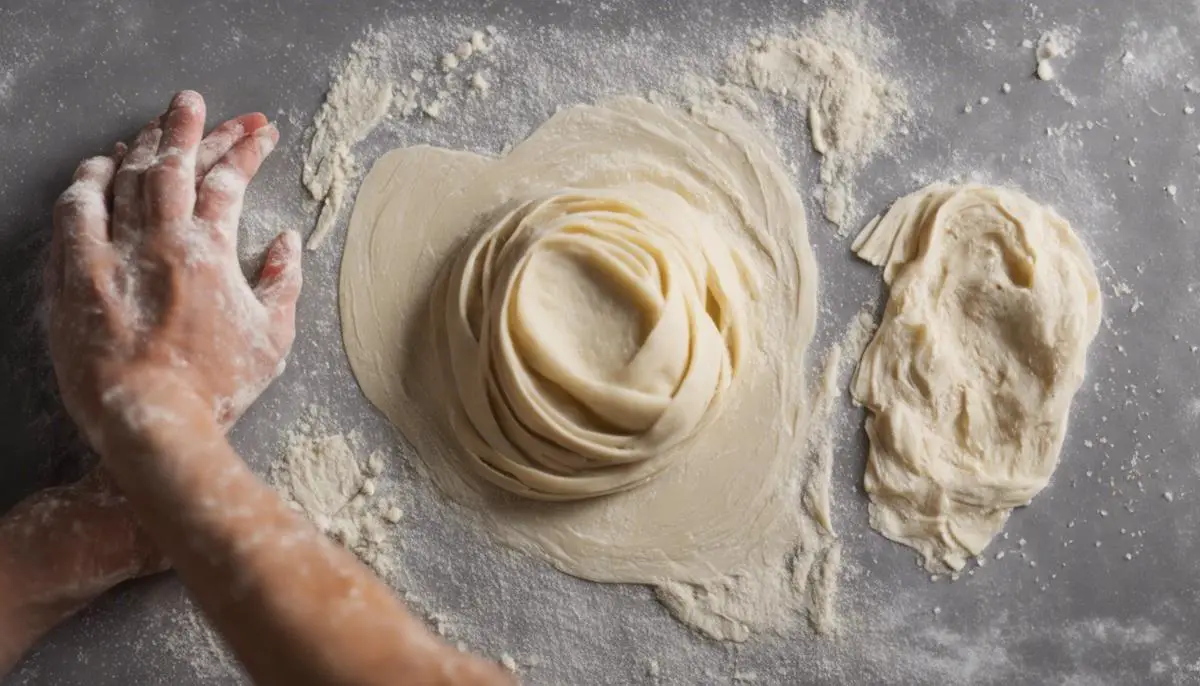
What are the main types of pasta?
Pasta categorizes into several main types, each distinct in shape, texture, and culinary application. Among these, spaghetti stands out for its long, thin, cylindrical form, ideal for clinging to light and olive oil-based sauces. Fusilli, with its corkscrew twists, excels at trapping thicker sauces in its grooves, offering a delightful texture contrast in every bite. Penne, recognized by its tube-like shape with angled ends, is versatile, adept at holding both creamy and hearty sauces, making it a staple in pasta dishes.
Farfalle, often called bow-tie pasta due to its shape, has a pinched middle that makes it ideal for lighter meals or salads, adding a playful texture. Rigatoni, with its ridged exterior and wide hollow core, is perfect for robust sauces, as its design facilitates sauce adherence and filling.
Shell-shaped pasta, such as conchiglie, effectively scoops up chunky sauces or can be used in baking dishes where their hollow insides become pockets for sauce or cheese. Tagliatelle, a broad, flat noodle, pairs beautifully with thick, creamy sauces that coat its wide surface, exemplifying how diverse shapes enhance different culinary creations.
The shape of pasta significantly influences its use in dishes. Thinner varieties are best suited for light, delicate sauces, letting the pasta take prominence, while intricate shapes are designed to capture and hold denser, more textured sauces. Understanding these nuances elevates the dining experience, allowing both novices and enthusiasts to experiment with pairing shapes and sauces harmoniously.
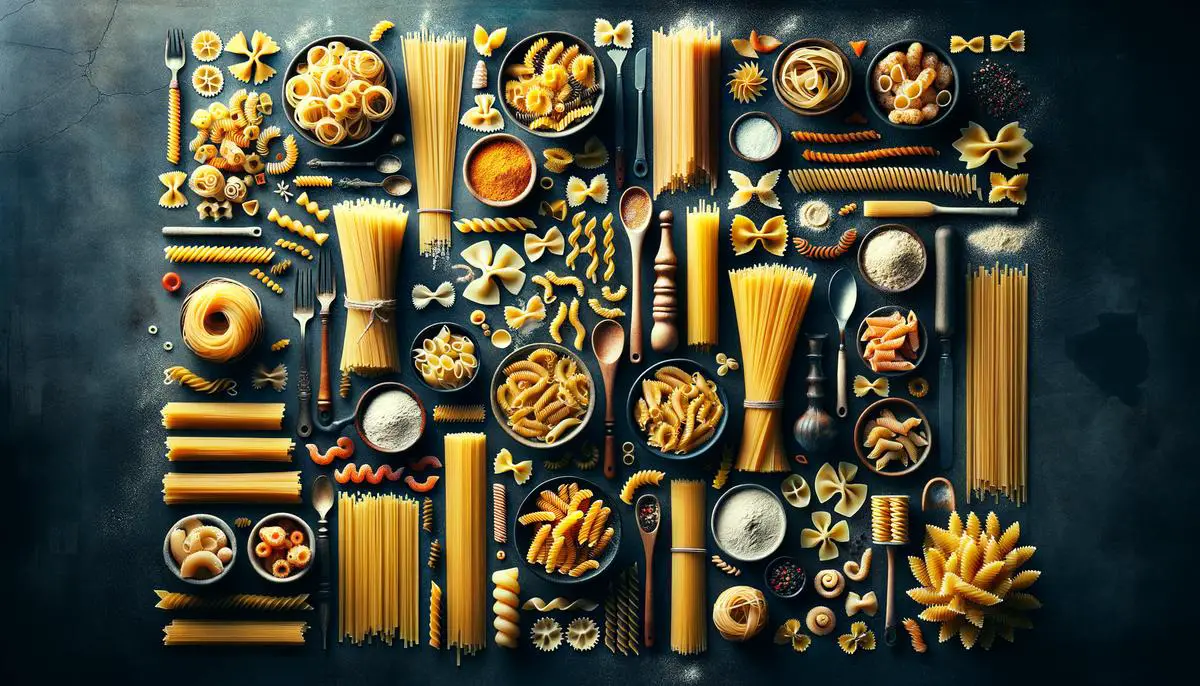
How to cook pasta perfectly?
To achieve perfect pasta, understanding each phase of the cooking process is paramount. The journey begins with selecting an appropriately sized pot—opt for a large one, ensuring ample space for pasta to move freely, preventing sticking and uneven cooking. Fill the pot with water, using about 4 quarts per pound of pasta, a critical ratio to maintain the pasta's texture and to facilitate even cooking.
A pivotal step often overlooked is salting the water. Add salt to taste once the water reaches a rolling boil, before adding the pasta. The salt doesn't just season the pasta; it enhances its flavor, allowing the pasta to absorb it during cooking. Around 1 to 2 tablespoons of salt per pound of pasta is recommended.1
Introduce pasta to boiling water and stir immediately. Keep the water at a steady boil to prevent clumping and ensure that the pasta cooks evenly. Adding oil to prevent sticking is a common misconception; proper stirring and ample water are more effective strategies.
Timing is critical. Refer to the package for specific instructions, but tasting pasta about 2 minutes before the indicated time can prevent overcooking. Perfectly cooked pasta, or 'al dente', should offer a slight resistance when bitten, yet be fully flexible. Overcooking pasta can lead to a mushy texture that fails to hold sauce properly.
Once cooked, reserve a cup of the starchy pasta water before draining. This water can be a secret weapon in sauces, offering silkiness and encouraging them to cling to the pasta.
Avoid rinsing your pasta after draining, as this washes away beneficial starches that aid in sauce adhesion. Quickly combine the pasta with your chosen sauce while still hot to allow the flavors to meld seamlessly.
Common mistakes include under-salting water, overcrowding the pot, and neglecting to stir, resulting in pasta that's bland, unevenly cooked, or clumped together. By sidestepping these pitfalls and embracing meticulous attention to detail and timing, you can masterfully cook pasta to perfection, boosting your culinary confidence and enjoying the nuanced joy of Italian cooking.
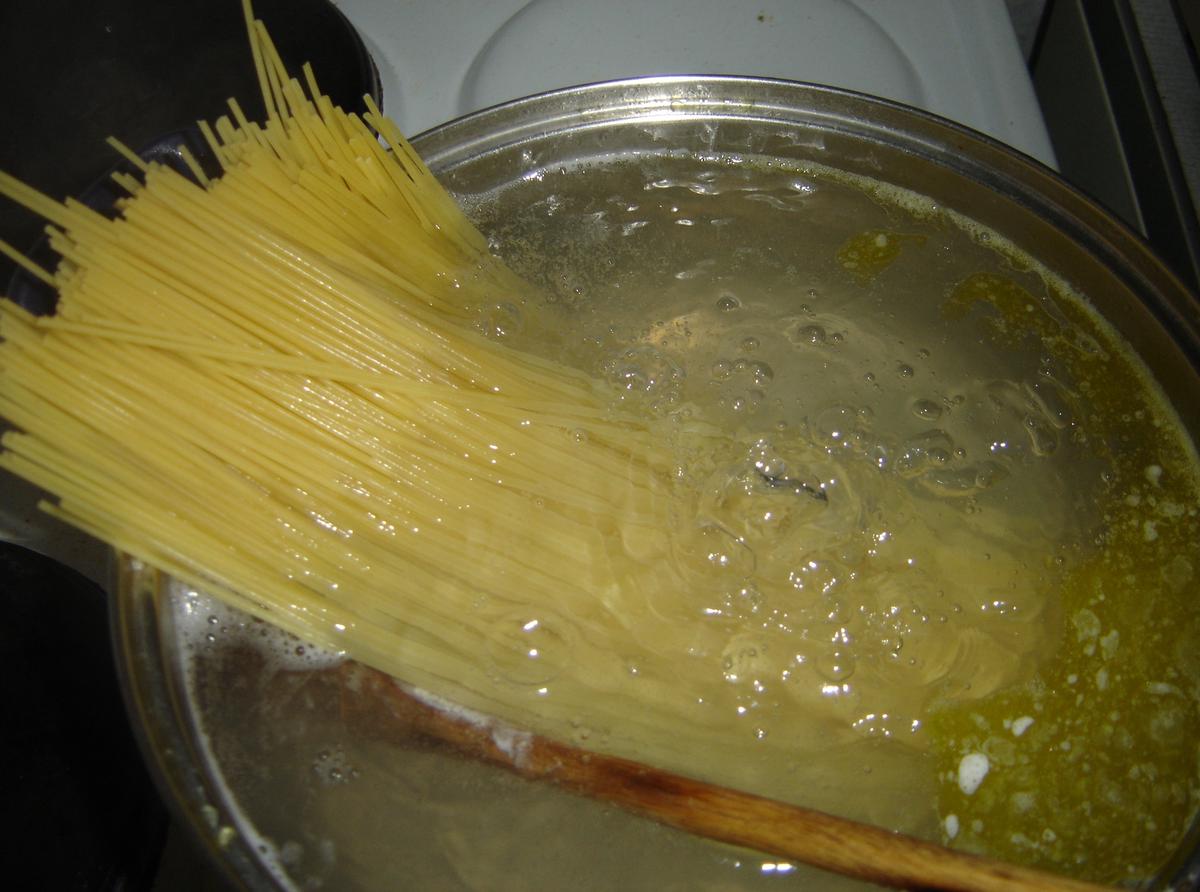
What are the best sauces for pasta?
Identifying the best sauces for pasta is akin to discovering the perfect culinary partners. Marinara, Alfredo, and pesto stand out as three prevalent choices, each with distinctive flavors and ideal pasta pairings.
Marinara sauce, a hallmark of traditional Italian cuisine, boasts a vibrant, tangy flavor derived from tomatoes, garlic, onions, and herbs. Its simplicity and lightness pair superbly with spaghetti or linguine, allowing the freshness of the sauce to shine through and complement the pasta. The inclusion of basil leaves adds a fragrant touch, infusing the dish with aromatic depth.
In contrast, Alfredo sauce serves as a rich, creamy counterpart, predominantly featuring butter, heavy cream, and Parmesan cheese. It envelops pasta in a velvety cloak of flavor, with fettuccine being the classical companion. The sauce's luxurious texture clings to the wide, flat noodles, making for an indulgent and satisfying meal.
Pesto offers a refreshing divergence with its bright green hue and vibrant flavors, thanks to fresh basil, garlic, pine nuts, Parmesan cheese, and olive oil. This aromatic, herbaceous sauce pairs exceptionally well with Genovese favorites such as trofie or trenette. Pesto's unique ability to bridge the gap between hearty and healthful makes it a versatile contender, adaptable to personal tastes and dietary preferences.
While these sauces each herald from Italian tradition, their true beauty lies in the potential for personalization. Exchanging pine nuts for walnuts in pesto or incorporating fresh chili into marinara can transform these classic sauces into something distinctly yours. Culinary creativity is celebrated within Italian cooking, encouraging an experimental approach to these beloved sauce recipes. Embrace this aspect of pasta preparation to fully engage with the cuisine's rich palette of flavors and textures, creating dishes that resonate with your culinary aesthetic.
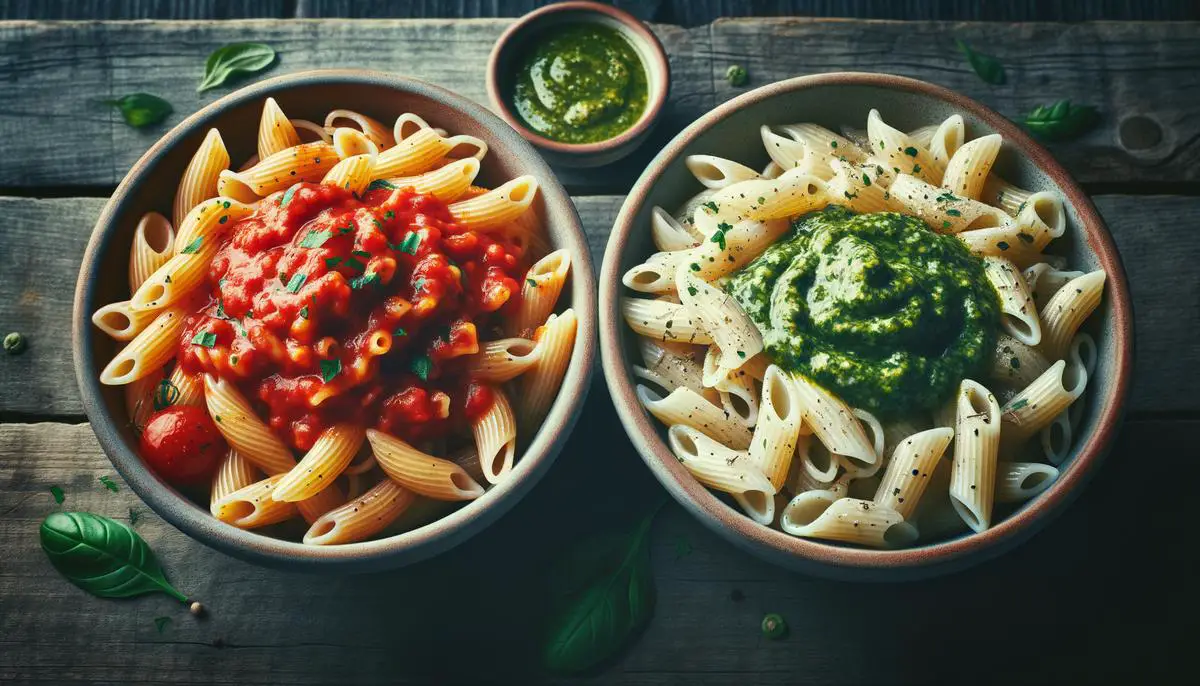
- Hazan M. Essentials of Classic Italian Cooking. Alfred A. Knopf; 1992.
